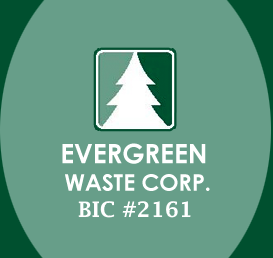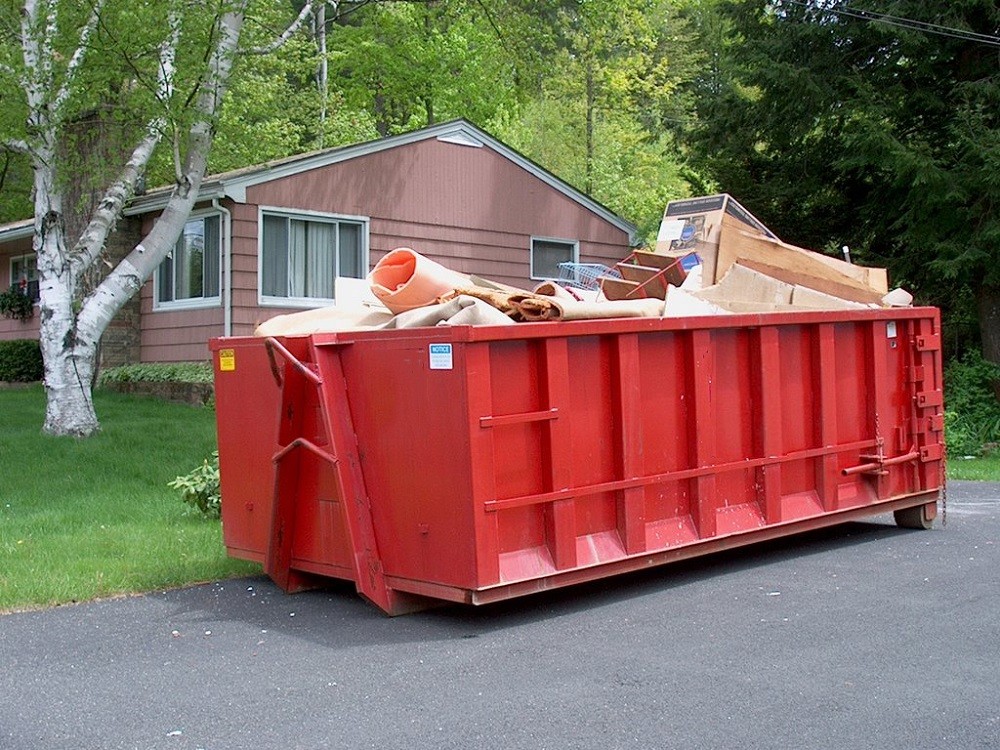
Are you ready to tackle your next big cleanup project? Before you dive in, it’s crucial to arm yourself with the tools and knowledge necessary for a successful dumpster rental experience. In this article we’ll walk you through the ins and outs of this process, ensuring that every step is covered. From understanding different dumpster sizes to selecting the perfect location, we’ve got you covered. Get ready to conquer your clean-up goals and create a safe environment with our comprehensive guide.
The significance of adequate preparation
Proper preparation is key to ensuring a smooth and successful dumpster rental experience. Planning ahead allows you to assess your needs and select the right size dumpster for your project, minimizing the risk of overfilling or exceeding weight limits. By being prepared, you can also ensure the safe disposal of hazardous materials and prevent any potential accidents or environmental damage. Taking the time to plan and prepare will save you time, money, and provide peace of mind throughout the rental process.
Understanding Different Dumpster Sizes
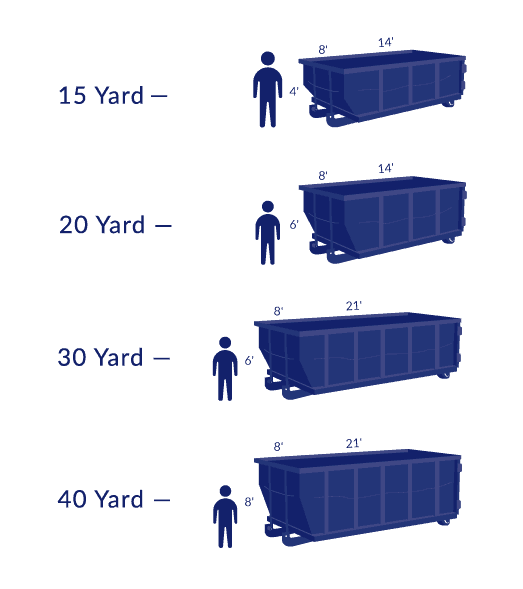
When it comes to choosing the right dumpster for your project, understanding the common dimensions and capacities is crucial. Dumpster sizes typically range from 10 to 40 cubic yards, with each size having its own unique dimensions. By considering factors such as the type of waste you’ll be disposing of and the amount of space available at your site, you can make an informed decision on which size will best suit your needs.
Common dumpster dimensions and capacities
The most common dumpster dimensions and capacities vary depending on the specific needs of the project. It is crucial to understand weight restrictions and proper disposal methods to ensure safety. Dumpsters usually come in sizes ranging from 10 to 40 cubic yards, with weight limits ranging from 2 to 8 tons. Remember to distribute weight evenly and avoid overloading the dumpster, as it can lead to accidents or damage. Always follow proper disposal guidelines for hazardous materials or prohibited items.
Choosing the right size for your project
Choosing the right size for your project will depend on the amount of waste you anticipate generating. To ensure safety and maximize space, consider these factors:
- Estimate the volume of waste: Calculate the approximate amount of debris or garbage you will produce during your project.
- Evaluate available space: Measure the area where the dumpster will be placed to determine if a larger or smaller size is suitable.
- Consult with professionals: Seek advice from dumpster rental experts who can recommend an appropriate size based on your specific needs.
Types of Waste: What Can You Dump
When it comes to disposing of waste in dumpsters, it is important to know what you can and cannot throw away. Most dumpsters allow for common household items such as furniture, appliances, construction debris, and yard waste. However, there are also prohibited items that should never be placed in a dumpster, such as hazardous materials like paint, chemicals, batteries, and flammable substances. It is crucial to familiarize yourself with the allowed items in most dumpsters and the list of prohibited items to ensure safe and proper disposal.
Allowed items in most dumpsters
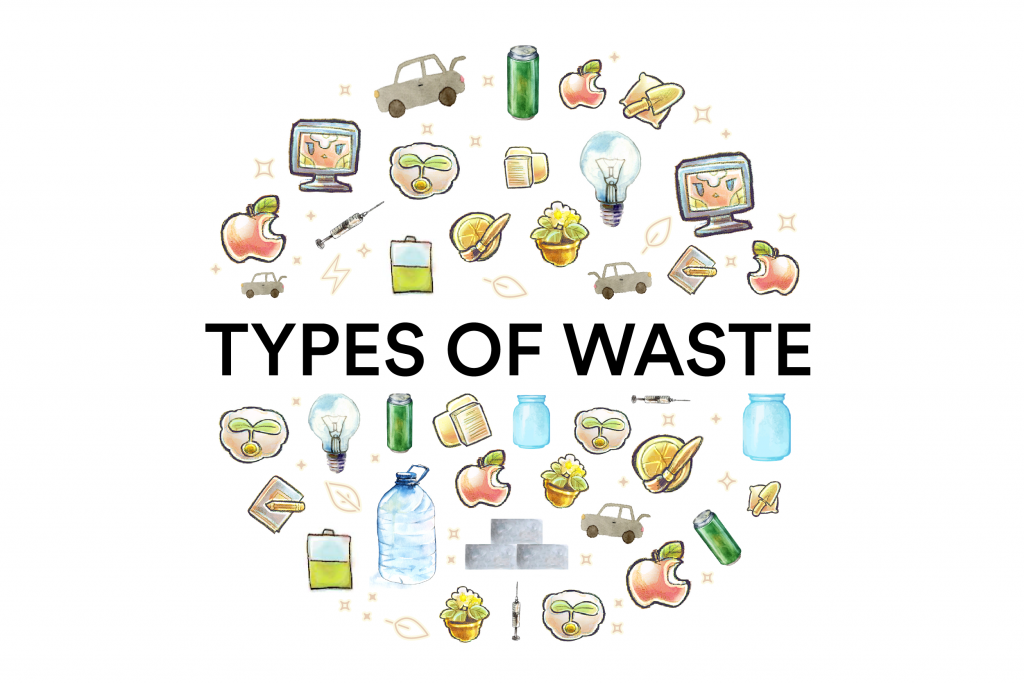
You can’t dispose of hazardous materials in most dumpsters. It’s important to follow recycling guidelines and disposal restrictions to ensure the safety of yourself, others, and the environment. Here are three items that are typically allowed in most dumpsters:
- Household waste: This includes everyday items such as food waste, packaging materials, and non-hazardous household chemicals.
- Construction debris: Common construction materials like wood, drywall, concrete, and metal can usually be disposed of in dumpsters.
- Furniture and appliances: Old furniture, mattresses, appliances like refrigerators or washing machines can often be placed in dumpsters.
Remember to always check with your dumpster rental company for specific guidelines and restrictions to avoid any issues or potential harm.
Prohibited items and hazardous materials
Make sure to familiarize yourself with the list of prohibited items and hazardous materials that cannot be disposed of in dumpsters. Proper disposal is crucial for your safety and the environment. Prohibited items include flammable substances like gasoline or propane tanks, toxic chemicals, asbestos-containing materials, and medical waste. Hazardous materials such as batteries, paint cans, and electronic devices should be handled separately for proper recycling. Always prioritize safety by following guidelines for prohibited items disposal and hazardous materials handling.
The Best Season to Rent a Dumpster
Spring:
Pros:
- Spring cleaning is a common activity, making it a popular time to declutter and dispose of unwanted items.
- The weather is generally mild, which can make the process of loading the dumpster more comfortable.
Cons:
Due to the popularity of spring cleaning, dumpsters might be in high demand, potentially leading to higher prices or limited availability.
Summer:
Pros:
- Long daylight hours allow for extended work time.
- Construction projects are often in full swing, making it a common time to rent dumpsters for debris.
Cons:
- The heat can make the process of loading the dumpster strenuous.
- High demand during this season might also lead to increased prices.
Fall:
Pros:
- Like spring, the weather is generally mild.
- It’s a good time for yard clean-ups, as leaves and other debris can be easily disposed of.
Cons:
If you’re in an area with a lot of trees, the rapid accumulation of leaves might require more frequent emptying of the dumpster.
Winter:
Pros:
Demand might be lower, potentially leading to better availability and lower prices.
Cons:
- Snow and ice can make access to the dumpster challenging.
- Cold temperatures can make the process of loading the dumpster uncomfortable.
- Some materials can freeze, making them harder to dispose of.
While each season has its pros and cons, the best time to rent a dumpster largely depends on your specific needs and local conditions. It’s always a good idea to plan ahead and consult with rental companies in advance to ensure availability and get the best rates.
Factors affecting seasonal demand
Factors like weather and holidays can greatly impact the demand for dumpster rentals throughout the year. To increase seasonal demand, consider these strategies:
- Offer special promotions during peak seasons to attract more customers.
- Provide flexible scheduling options to accommodate busy holiday periods.
- Ensure that dumpsters are properly secured and protected from harsh weather conditions, such as strong winds or heavy rain.
Advantages of off-peak seasons
During off-peak seasons, you can take advantage of lower demand for dumpster rentals to negotiate better pricing and save money. This is a great opportunity to maximize the advantages of off-peak seasons. By planning your project during these times, you can secure a larger dumpster at a discounted rate. Additionally, you can focus on maximizing dumpster space by properly organizing and compacting your waste, ensuring safety and efficiency while minimizing costs.
Selecting the Perfect Location
When selecting the perfect location for your dumpster, safety should always be your top priority. It is crucial to avoid placing the dumpster near power lines or on unstable grounds to prevent any accidents or damage. Additionally, you need to ensure that the chosen location allows easy accessibility for delivery trucks, as this will simplify the process of drop-off and pick-up. Lastly, don’t forget to check municipal regulations regarding dumpster placement, as there may be specific guidelines and restrictions in place that you need to adhere to.
Safety first: Avoiding power lines and unstable grounds
To ensure your safety, make sure you don’t start the dumpster rental process without checking for power lines and unstable grounds. Here are three important safety precautions to follow:
- Conduct a thorough inspection of the area where you plan to place the dumpster. Look for any overhead power lines that could pose a risk during delivery or removal.
- Check the ground for stability and evenness. Avoid areas with soft soil, slopes, or uneven terrain that could cause the dumpster to tip over or become unstable.
- Consult with professionals if you have any concerns about potential hazards in your chosen location. It’s better to be safe than sorry when it comes to protecting yourself and others from accidents related to dumpster rental equipment.
Accessibility for delivery trucks
Make sure you have a clear and accessible path for the delivery truck to reach your desired location. Consider the size of the truck when planning the route. Check for any delivery restrictions in your area, such as low bridges or narrow roads. Make sure there are no obstacles that could impede the truck’s access, such as trees or parked cars. Ensuring a smooth and safe delivery will help prevent any accidents or delays.
Municipal regulations on dumpster placement
Municipal regulations may determine where you can place your dumpster. To ensure compliance and prioritize safety, consider the following guidelines:
- Distance from buildings: Keep dumpsters at least 5 feet away from any structure to prevent fire hazards and allow for easy access.
- Roadway obstruction: Avoid obstructing traffic flow by placing dumpsters in designated areas or obtaining permits for temporary placement.
- Environmental impact: Follow local regulations regarding proper disposal of hazardous materials and explore recycling opportunities to reduce waste and promote sustainability.
Preparing the Ground for Dumpster Placement
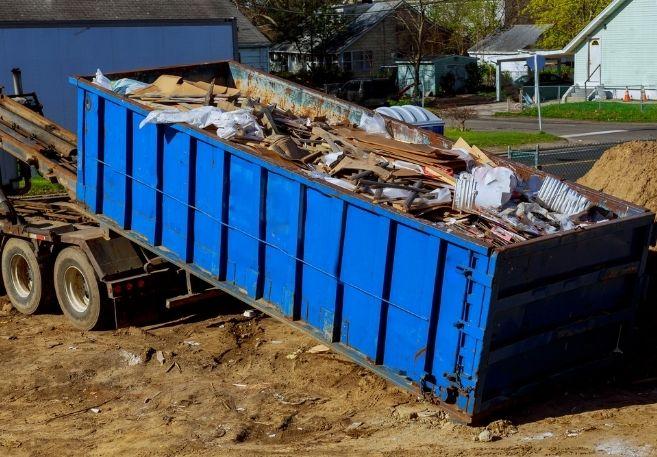
Using plywood or boards to protect the surface
You’ll want to use plywood or boards to safeguard the surface when placing your dumpster. This protective measure is crucial for preventing any damage to the ground underneath. Here are three important reasons why you should use plywood or boards:
- Prevents scratches and gouges: By providing a sturdy barrier between the dumpster and the ground, plywood or boards ensure that no sharp edges or heavy weights will cause any surface damage.
- Distributes weight evenly: Placing plywood or boards under the dumpster helps distribute its weight more evenly. This prevents concentrated pressure points that can lead to sinking or cracking of the surface.
- Protects against moisture: Plywood acts as a moisture barrier, preventing water from seeping into the ground and causing erosion or softening of the soil beneath the dumpster.
Importance of a level ground
To ensure a stable and secure placement, it’s important to have a level ground before setting up your dumpster. Level ground is crucial because it prevents the dumpster from tipping over or shifting unexpectedly. When placing the dumpster, make sure there are no slopes, bumps, or uneven surfaces that could compromise its stability. A properly leveled ground ensures safe and efficient use of the dumpster, minimizing the risk of accidents or damage to property.
Scheduling and Duration: Getting the Timing Right
When it comes to scheduling your dumpster rental, there are a few key points to keep in mind. First, it’s important to avoid peak times if possible. These times typically include weekends and holidays when demand is high and prices may be inflated. Secondly, you should consider the duration of your rental and whether or not you may need an extension. It’s crucial to plan ahead and factor in any potential additional costs that could arise from extending your rental period.
Peak times to avoid
Avoid peak times for dumpster rentals – it’ll save you time and hassle. During peak season demand, finding available dumpsters can be challenging, leading to delays in your project. Instead, consider these alternative waste disposal methods:
- Recycling: Separate recyclable materials like paper, plastic, and glass to reduce the amount of waste going into the dumpster.
- Donation Centers: Donate unwanted items that are still in good condition instead of disposing them in a dumpster.
- Composting: Compost organic waste such as food scraps and yard trimmings to minimize the amount of waste requiring a dumpster.
Rental extensions and associated costs
Need more time for your dumpster rental? Rental extensions are available, but be aware that they may come with additional costs. It is important to familiarize yourself with the rental extension policies of your chosen provider to avoid any surprises or hidden fees. Some companies charge a daily rate for extended rentals, while others may require you to upgrade to a larger dumpster size. Always read the fine print and communicate your needs in advance to ensure a smooth and cost-effective rental experience.
Evaluating Dumpster Rental Companies
When evaluating dumpster rental companies, there are several key points to consider. First, you should check for licenses and certifications to ensure that the company is operating legally and meets industry standards. Secondly, customer reviews and testimonials can provide valuable insights into the company’s reputation and level of service. Lastly, it is important to inquire about any additional services and add-ons that the company may offer, such as recycling options or special disposal requirements. By considering these factors, you can make an informed decision when choosing a dumpster rental provider.
Checking for licenses and certifications
Make sure to check if the company you are considering has the necessary licenses and certifications for dumpster rental. It is crucial to verify their credentials as it ensures compliance with local regulations and safety standards. Here’s why you should prioritize this step:
- Legal Compliance: Licensed companies have met all the requirements set by local authorities, ensuring that they operate within the law.
- Safety Assurance: Certified companies follow industry best practices, minimizing risks associated with waste disposal and handling.
- Accountability: Verifying credentials allows you to trust that the company is reputable and will provide reliable services while adhering to environmental regulations.
Customer reviews and testimonials
Now that you’ve checked for licenses and certifications, it’s time to look at customer reviews and testimonials. These can provide valuable insight into the dumpster rental company’s reputation and level of customer satisfaction. Positive feedback from previous customers is a good indication that the company delivers on its promises and provides a reliable service. Take the time to read through these reviews to ensure you make an informed decision for a safe and satisfactory experience.
Additional services and add-ons
To enhance your dumpster rental experience, take a look at the additional services and add-ons offered by the company. These options can provide added convenience and safety during your project. Consider the following delivery options:
- Same-day delivery: Need a dumpster right away? This service ensures that you get your dumpster delivered on the same day you request it.
- Extended rental periods: Sometimes projects take longer than expected. With extended rental periods, you have more time to complete your project without worrying about additional fees.
- Dumpster placement assistance: Unsure where to place your dumpster? The company can provide guidance on the best location to ensure safety and easy access for disposal.
Understanding Rental Agreements
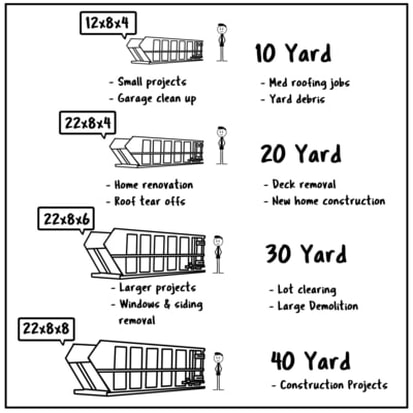
When it comes to renting dumpsters, understanding the rental agreement is crucial. There are key terms and conditions that you need to be aware of before signing the contract. It is important to pay close attention to potential hidden charges and fees that may not be explicitly mentioned in the agreement.
Key terms and conditions
Before renting a dumpster, it’s important to understand the key terms and conditions. These terms outline your responsibilities and the limitations of the rental agreement. Here are three essential points to consider:
- Rental Period: Determine how long you can keep the dumpster on your property without incurring additional fees.
- Weight Limit: Be aware of the maximum weight allowed for the dumpster to avoid overloading and potential safety hazards.
- Hidden Charges: Familiarize yourself with any potential extra costs like delivery fees, fuel surcharges, or charges for exceeding weight limits.
Understanding these key terms will ensure a smooth and cost-effective dumpster rental experience while prioritizing safety.
Potential hidden charges and fees
Now that you understand the key terms and conditions of your dumpster rental, it’s important to be aware of potential hidden charges and additional fees. These extra costs can catch you off guard if you’re not prepared. Some common hidden charges include overweight fees, extended rental fees, and fees for prohibited items. Make sure to carefully read the rental agreement and ask the provider about any potential additional charges before finalizing your rental to avoid surprises later on.
Efficiently Filling the Dumpster
When it comes to efficiently filling your dumpster, maximizing space is crucial. The art of arranging waste involves strategically placing items to ensure you make the most of the available area. By organizing and compacting your debris effectively, you can avoid overfilling the dumpster and facing potential consequences such as additional fees or even having to rent another container.
Maximizing space: the art of arranging waste
To make the most of your dumpster rental, you’ll want to master the art of arranging waste and maximizing space. Here are three key strategies to help you organize your waste efficiently:
- Sort and separate: Before loading the dumpster, categorize your waste into different groups such as recyclables, hazardous materials, and general trash. This will not only make disposal easier but also prevent any potential safety hazards.
- Compact and flatten: To optimize space utilization, compact bulky items like furniture or cardboard boxes. Flatten large objects whenever possible to create more room for additional waste.
- Stack and layer: Arrange items strategically by stacking them vertically rather than spreading them horizontally. Place heavier items at the bottom and lighter ones on top to maintain stability within the dumpster.
Avoiding overfilling and its consequences
You don’t want to overfill your dumpster and risk facing the consequences. It’s crucial to prioritize safety when it comes to waste disposal. Maximize space by organizing items efficiently within the dumpster. Properly dispose of materials according to local regulations and guidelines, ensuring hazardous substances are handled appropriately. By following these steps, you can prevent accidents, avoid fines or penalties, and contribute to a safer environment for everyone involved in the waste management process.
Safety Measures During Use
When using a dumpster, it is crucial to prioritize the safety of children and pets. Ensure that they are kept away from the area where the dumpster is placed to avoid any potential accidents or injuries. Additionally, it is important to handle hazardous and prohibited items with caution. Familiarize yourself with the list of prohibited materials provided by your dumpster rental company and ensure that you dispose of them properly to maintain a safe environment for everyone involved in the process.
Protecting children and pets
Ensure all hazardous materials are properly stored and out of reach from children and pets. To effectively childproof your home and ensure pet safety, follow these guidelines:
- Install childproof locks on cabinets containing cleaning products, chemicals, and other dangerous substances.
- Keep medications in a secure location that is inaccessible to both children and pets.
- Store sharp objects such as knives and scissors in locked drawers or high shelves to prevent accidental injuries.
Handling hazardous and prohibited items
Now that you know how to protect your children and pets during your dumpster rental, let’s talk about handling hazardous and prohibited items. It is crucial to follow recycling guidelines and proper disposal methods to ensure everyone’s safety. Hazardous materials like chemicals, batteries, and flammable substances should be brought to designated facilities for safe disposal. Prohibited items such as asbestos, medical waste, and electronics should also be disposed of properly at authorized drop-off points.
Environmentally Conscious Dumping
When it comes to environmentally conscious dumping, there are two key points that you need to keep in mind: recycling opportunities and proper disposal of organic waste. Recycling offers a great opportunity to reduce waste and conserve resources. By separating recyclable materials from your trash, you can contribute to the circular economy and help protect the environment. Additionally, it is important to properly dispose of organic waste such as food scraps and yard trimmings in order to prevent pollution and promote composting initiatives.
Recycling opportunities
Don’t forget to research local recycling opportunities before renting a dumpster. Recycling initiatives play a crucial role in reducing landfill waste and protecting the environment. Here are three important steps to follow:
- Find out if your local municipality offers curbside recycling services.
- Look for nearby recycling centers that accept different types of materials, such as paper, plastic, glass, and metal.
- Consider donating items that are still in good condition to local charities or thrift stores instead of disposing them in the dumpster.
Proper disposal of organic waste
To properly dispose of organic waste, you should consider composting it to create nutrient-rich soil for your garden. Organic waste management is crucial for the environment and your safety. Composting methods involve collecting kitchen scraps, yard trimmings, and other organic materials in a designated bin or pile. Turn the pile regularly to ensure proper decomposition. Avoid adding meat, dairy products, or oily items that can attract pests. With these composting methods, you can reduce waste and create valuable soil amendments for your garden.
The Cost Factor: Getting the Best Bang for Your Buck
When it comes to renting a dumpster, understanding the common pricing models can help you make an informed decision. There are typically two main pricing models: flat-rate and variable-rate. Flat-rate pricing offers a fixed price for the entire rental period, while variable-rate pricing is based on factors such as weight or size of the dumpster. To save money on your rental, consider these tips: choose the right size dumpster for your needs, plan ahead to avoid rush fees, and explore discounts or promotions offered by rental companies.
Common pricing models
One of the most common pricing models for dumpster rentals is based on the size of the container. This model allows you to choose a container that best fits your needs. Here are three key factors to consider when it comes to rental terms and hidden fees:
- Size options: Dumpster rental companies offer various container sizes, ranging from 10 to 40 cubic yards. Selecting the right size ensures you only pay for what you need.
- Rental duration: Be aware of the duration included in your rental agreement. Additional fees may apply if you exceed the agreed-upon timeframe.
- Hidden fees: Make sure to inquire about any potential hidden fees such as delivery charges, disposal costs, or overweight penalties upfront to avoid surprises later on.
Tips for saving money on your rental
Consider these money-saving tips for your dumpster rental: start by comparing prices from different companies, utilize the dumpster to its full capacity, and return it on time to avoid any extra fees. To maximize savings, choose a rental duration that aligns with your project timeline. Plan ahead and estimate how long you will need the dumpster, as extending the rental period can result in additional charges. By optimizing the rental duration, you can save money while efficiently completing your project.
The Importance of a Walk-Through Inspection
Before you begin your dumpster rental, it is crucial to identify potential issues that may arise during the process. Conducting a comprehensive walk-through inspection will allow you to spot any existing damages or hazards, ensuring a smooth and hassle-free experience. It is also essential to document the condition of the area before and after the rental period, providing evidence in case of any disputes or claims regarding damage.
Identifying potential issues before they arise
Identifying and addressing potential issues beforehand can help ensure a smooth dumpster rental experience. To avoid any challenges or complications, here are three troubleshooting tips to consider:
- Evaluate the location: Ensure that the area where the dumpster will be placed is free from obstacles such as low-hanging branches, power lines, or uneven ground.
- Check weight restrictions: Familiarize yourself with the weight limits of your chosen dumpster to prevent overloading and potential damage.
- Understand prohibited items: Make sure you know what items are not allowed in the dumpster, such as hazardous materials or electronic waste, to avoid any safety concerns or additional charges.
Documenting the condition pre and post-rental
Now that you’ve learned how to identify potential issues before renting a dumpster, it’s important to document the condition of the dumpster both before and after your rental. This is crucial for ensuring accountability and avoiding any disputes or additional charges. Take photos or videos of the dumpster’s condition from all angles, highlighting any existing damage. Additionally, make sure to follow proper disposal methods to ensure safety and compliance with regulations.
Dealing with Unexpected Situations
When it comes to unexpected situations during your dumpster rental, weather conditions can have a significant impact on your project
Weather conditions and their impact
Before you schedule your dumpster rental, consider how weather conditions might affect your project. Extreme weather can have a significant impact on the success and safety of your waste disposal efforts. Here are three precautions to take for inclement weather:
- Secure the dumpster: Strong winds can cause the dumpster to tip over or blow away, posing a danger to people and property.
- Cover it up: Heavy rain or snow can fill up the dumpster, making it difficult to remove waste and increasing weight.
- Clear access paths: Ice or snow accumulation can make it challenging for delivery trucks or workers to access the dumpster safely.
Damage or vandalism: What to do next
If you discover any damage or vandalism to the dumpster, please contact our customer service immediately. Damage prevention is crucial to ensure the safety of both your property and the contents of the dumpster. Regularly inspect the dumpster for signs of wear, such as rust, dents, or leaks. Additionally, be vigilant in reporting any acts of vandalism, such as graffiti or intentional destruction. Prompt reporting allows us to take swift action and maintain a secure environment for all customers.
Finalizing the Rental: The Pickup Process
When it comes to finalizing your dumpster rental, there are a few important things to keep in mind.
Scheduling a pickup date
To schedule a pickup date for your dumpster rental, you’ll need to contact the rental company. They will guide you through the evaluation process and ensure that all safety measures are in place. Communication with the rental company is crucial during this stage, as they will provide you with important information regarding pickup logistics. Here are three key steps to scheduling your pickup date:
- Contact the rental company: Reach out to the rental company and inform them of your desired pickup date.
- Confirm availability: The rental company will check their schedule and confirm if your preferred date is available.
- Finalize details: Once a pickup date is agreed upon, make sure to communicate any specific requirements or instructions for the pickup process.
Ensuring the dumpster is ready and accessible
Make sure the dumpster’s location is clear and accessible for the pickup company. Before the scheduled pickup date, take time to prepare the surrounding area. Clear any obstacles or debris that may hinder access to the dumpster. This will ensure a smooth and efficient process while maintaining safety standards. Additionally, it is crucial to ensure proper disposal methods are followed. Familiarize yourself with local regulations and guidelines to dispose of waste responsibly, protecting both people and the environment.
Post-Rental Responsibilities
When it comes to post-rental responsibilities, there are two key points that you need to consider:
Cleanup around the dumpster area
Clear any debris or trash from around the dumpster to ensure a clean and safe working area.
1) Remove any loose objects such as rocks, sticks, or branches that may pose a tripping hazard.
2) Sweep the ground to eliminate dirt, dust, and small particles that can contaminate the area.
3) Dispose of any hazardous materials properly to prevent environmental damage.
Following these cleanup techniques and waste management strategies will help maintain hygiene and reduce the risk of accidents during your dumpster rental process.
Evaluating the need for future rentals
Now that you’ve cleaned up the area around the dumpster, it’s time to evaluate your need for future rentals. When considering renting a dumpster again, it’s important to compare rental options and prices. Take into account factors such as size, weight limits, duration of rental, and any additional fees. By carefully evaluating rental prices and comparing different options, you can ensure that you’re getting the most cost-effective solution for your waste management needs.
Benefits of a Well-Prepared Dumpster Rental Experience
When it comes to renting a dumpster, you want the process to be stress-free, cost-efficient, and time-saving.
Stress-free rental
Don’t let the rental process stress you out – follow these tips for a hassle-free experience.
- Choosing the right size for your project:
- Assess the amount of waste you have
- Consider the space available for the dumpster
- Consult with professionals to determine the appropriate size
- Ensuring proper waste disposal:
- Sort and separate different types of waste
- Follow local regulations and guidelines for disposal
- Avoid placing hazardous materials in the dumpster
Cost-efficiency and time-saving
To save time and money, consider renting a dumpster that suits the size of your project and disposing waste properly. By doing so, you can maximize efficiency and improve time management. Choosing the right dumpster size ensures ample space for all your debris while avoiding unnecessary trips to dispose of waste. Proper disposal methods also contribute to a safe working environment, preventing accidents and ensuring compliance with local regulations. Prioritize cost-efficiency and time-saving by planning ahead for your dumpster rental needs.
Common Mistakes to Avoid
When it comes to dumpster rentals, there are a few common mistakes that you should avoid at all costs.
Last-minute bookings
If you’re running out of time, it’s still possible to secure a dumpster rental at the last minute. Here are three key steps to ensure you can find a rental quickly and efficiently:
- Research multiple providers: Look for companies that offer last-minute availability or emergency rentals. Check their websites and read customer reviews to ensure they are reliable and trustworthy.
- Contact the providers: Reach out to each company and inquire about their availability for your desired rental period. Ask if they have any special deals or discounts for last-minute bookings.
- Book your rental: Once you’ve found a provider with availability, confirm your reservation as soon as possible. Provide all necessary information, such as delivery address and rental duration, to ensure a smooth process.
Remember to prioritize safety when choosing a dumpster rental provider, even in emergency situations.
Ignoring weight limits and overstuffing
Ignoring weight limits and overstuffing can lead to additional fees and potential damage to the dumpster. It’s essential to follow these guidelines for your safety. Overloading the dumpster beyond its capacity poses potential dangers, such as structural instability and difficulty during pickup. Additionally, exceeding weight limits can result in costly fees or even refusal of service. To avoid these consequences, carefully estimate your waste volume, distribute the load evenly, and never exceed the specified weight limit.
Conclusion
In conclusion, adequate preparation is key when it comes to renting a dumpster. By understanding the different sizes available and knowing what types of waste can be dumped, you can ensure a smooth rental experience. It is also important to consider the best season for your rental and select the perfect location for placement. By finalizing the rental process and taking care of post-rental responsibilities, you can enjoy the benefits of a well-prepared dumpster rental. Interesting statistic: Did you know that over 50% of waste in landfills could have been recycled or repurposed? So make sure to dispose of your waste responsibly!
